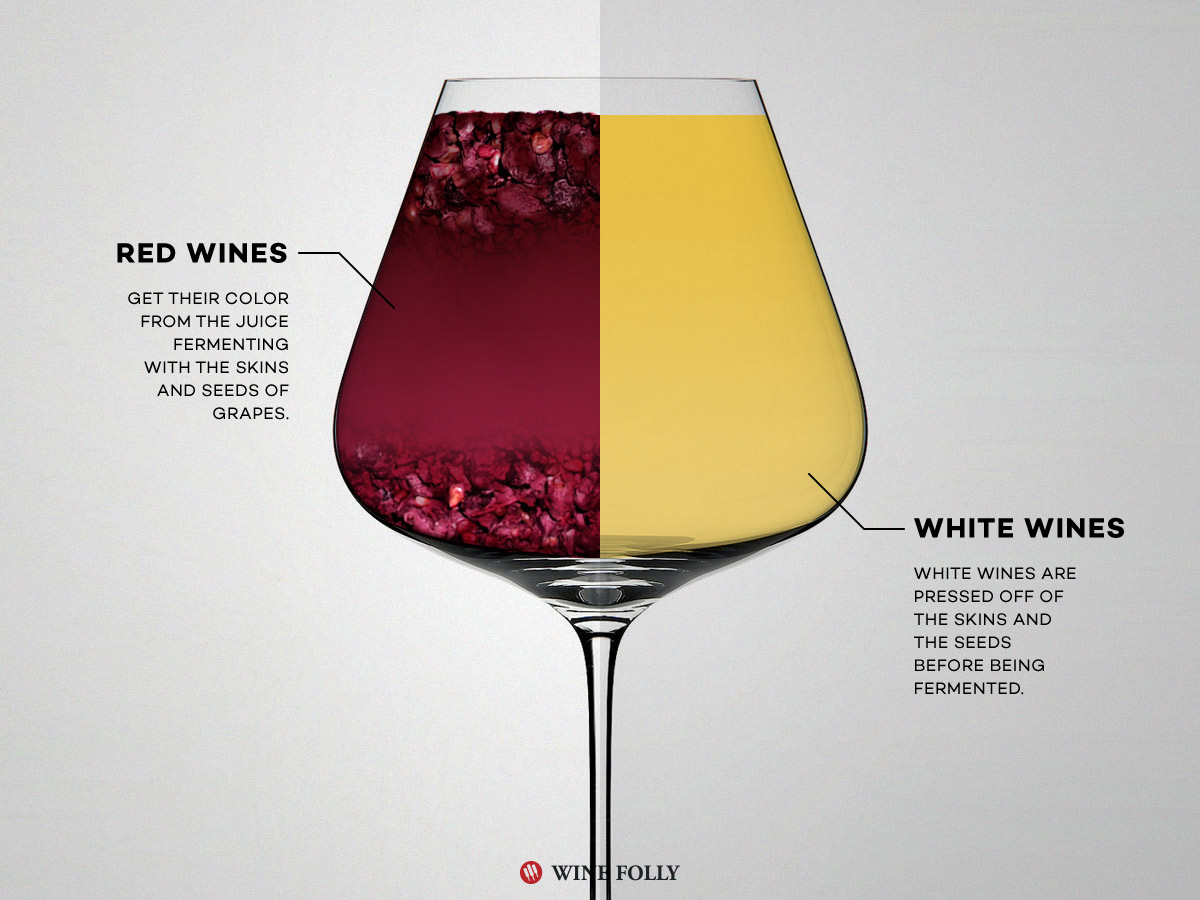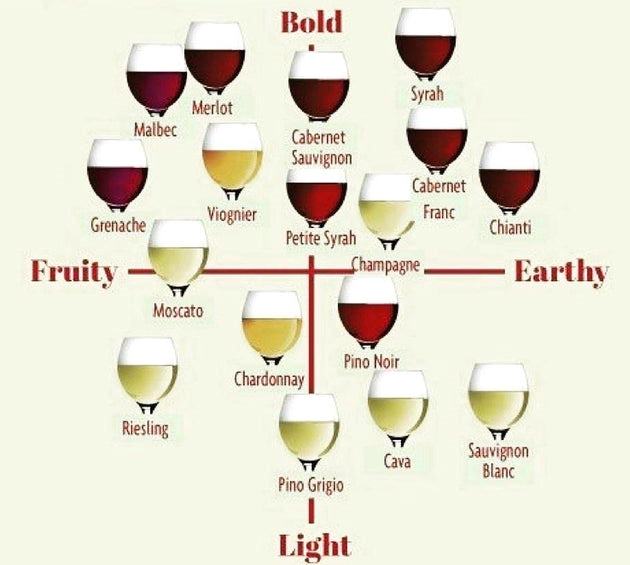Introduction To White And Red Wine

White wine and red wine are two of the most popular types of wines in the world. White wine is made from the juice of white or green grapes and can range in flavor from light and crisp to rich and buttery. It is known for its refreshing acidity and vibrant fruit flavors. On the other hand, red wine is made from the juice of red or black grapes and is known for its fuller body and complex flavors, including dark fruits, spices, and earthy notes. The choice between white and red wine ultimately comes down to personal preference and the occasion.
White Wine Varieties And Characteristics
White wine offers a vast array of varieties, each with its own unique characteristics. Some popular white wine varieties include Chardonnay, Sauvignon Blanc, Riesling, and Pinot Grigio. Chardonnay is known for its buttery and creamy texture, with flavors of tropical fruits and vanilla. Sauvignon Blanc is crisp and refreshing, with notes of citrus, green apple, and herbs. Riesling is known for its aromatic profile, offering floral and fruity notes, while Pinot Grigio is light and crisp, with flavors of pear and citrus. These different varieties provide wine enthusiasts with a diverse range of flavors and styles to explore.
Red Wine Varieties And Characteristics
There is a wide range of red wine varieties, each with its own unique characteristics. Some popular red wine varieties include Cabernet Sauvignon, Merlot, Pinot Noir, and Syrah. Cabernet Sauvignon is known for its full-bodied taste, with flavors of blackcurrant, cedar, and tobacco. Merlot offers a softer and smoother profile, with notes of red fruits, chocolate, and herbs. Pinot Noir is known for its delicate and light-bodied nature, with flavors of red berries and earthy undertones. Syrah is bold and intense, with flavors of blackberry, pepper, and smoky notes. These different red wine varieties provide a diverse range of flavors and styles to explore.
Differences In Production And Aging

In addition to their distinct characteristics and flavor profiles, red and white wines also differ in terms of production and aging methods. White wines are typically made from white or light-colored grape varieties and undergo a gentle pressing process to extract juice. The juice is then fermented at cool temperatures to preserve the wine’s fresh and fruity flavors. Red wines, on the other hand, are made from red or dark-skinned grape varieties and undergo a maceration process where the grape skins are left in contact with the juice during fermentation. This process extracts color, tannins, and additional flavors from the skins, resulting in a more robust and structured wine. Red wines also typically undergo aging in oak barrels, which imparts additional complexity and flavor to the wine. Overall, the differences in production and aging methods contribute to the unique characteristics of both red and white wines.
Production Process Of White Wine
The production process of white wine begins with the careful selection and harvesting of white or light-colored grape varieties. Once harvested, the grapes are gently pressed to extract the juice, which is then transferred to fermentation tanks. During fermentation, the juice is typically fermented at cool temperatures to preserve the wine’s fresh and fruity flavors. After fermentation, the wine may undergo additional processes such as clarification and stabilization to ensure its clarity and stability. Finally, the white wine is bottled and ready to be enjoyed. The production process of white wine emphasizes the preservation of the wine’s delicate and vibrant characteristics.
Aging And Fermentation Of Red Wine
Aging and fermentation play crucial roles in the development of red wine. After the primary fermentation process, where yeast converts sugar into alcohol, the red wine undergoes a secondary fermentation called malolactic fermentation. This process helps to soften the wine’s acidity and enhance its smoothness. Following fermentation, red wines are typically aged in oak barrels or stainless steel tanks, where they are exposed to oxygen and undergo chemical changes that contribute to their complex flavors and aromas. The aging process can vary depending on the wine style, with some red wines being aged for several months or even years before they are ready to be enjoyed.
Tasting Notes And Flavor Profiles

When it comes to tasting wine, the experience is all about exploring the intricate flavor profiles that each wine has to offer. White wines showcase a diverse range of flavors, from the zesty notes of citrus fruits to the luscious taste of tropical fruits. These flavors are often accompanied by hints of green apple, pear, and delicate floral or herbal nuances. On the other hand, red wines boast a more robust and full-bodied taste, with flavors like blackberries, cherries, and plums taking center stage. These flavors are often complemented by spicy, tobacco, and earthy undertones. Whether you prefer the refreshing and vibrant taste of white wine or the bold and complex flavors of red wine, the world of wine tasting offers something for everyone.
Describing White Wine Flavor Profiles
White wines offer a wide range of flavor profiles that can be described as refreshing, vibrant, and diverse. These wines often showcase crisp and bright notes of citrus fruits like lemon, lime, and grapefruit. They may also exhibit flavors of green apple, pear, and stone fruits such as peach or apricot. White wines can have delicate floral aromas, with hints of jasmine, honeysuckle, or elderflower. Some varietals may even display herbal notes like grass, basil, or mint. The combination of these flavors creates a balanced and aromatic experience that is perfect for those seeking a lighter and fruit-forward wine.
Analyzing Red Wine Taste Characteristics
Analyzing Red Wine Taste Characteristics:
Red wines offer a diverse range of taste characteristics that can be described as rich, bold, and complex. These wines often exhibit flavors of dark fruits such as blackberry, cherry, and plum. They can also showcase notes of spices like black pepper, cinnamon, and cloves. Red wines are known for their earthy undertones, with hints of leather, tobacco, and cedar. Some varietals may even display nuances of chocolate, coffee, or vanilla. The combination of these flavors creates a full-bodied and robust experience that is perfect for those seeking depth and complexity in their wine.
Food Pairing Suggestions

When it comes to food pairing, white and red wines have different characteristics that complement various dishes. For white wine, its higher acidity makes it a great match for delicate-intensity meats such as chicken and fish. It also pairs well with creamy sauces and lighter dishes. On the other hand, red wines with their bold flavors and tannins are best suited for bold-flavored meats like red meat. They also pair well with rich and fatty foods. Remember, it’s not just about the meat, but also about the sauce and overall flavors of the dish.
White Wine And Food Pairing Guidelines
White wine and food pairing can enhance the dining experience by creating harmonious flavor combinations. When pairing white wine, it is recommended to match light-intensity meats such as fish or chicken. The higher acidity in white wine pairs well with delicate flavors and creamy sauces. For seafood dishes, crisp and dry white wines like Sauvignon Blanc or Chardonnay are excellent choices. Rich and aromatic white wines like Gewürztraminer or Riesling can complement spicy or Asian-inspired dishes. Remember to consider the overall flavors of the dish and choose a white wine that complements and enhances the flavors.
Red Wine And Culinary Matches
Red wine pairs exceptionally well with bold and rich flavors in food. The intense flavors and tannins in red wine can complement and enhance the flavors of dishes such as red meats, game meats, and hearty stews. The robustness of red wine can cut through the richness of fatty meats and create a harmonious balance. Certain red wine varietals, like Cabernet Sauvignon and Merlot, lend themselves well to pairing with grilled and roasted meats, while lighter red wines like Pinot Noir can be paired with dishes like roasted chicken or salmon. It’s important to consider the flavors and intensity of the dish when selecting a red wine to ensure a harmonious pairing.
Health Benefits And Nutritional Value

Red wine and white wine both offer potential health benefits, although in different ways. Red wine is often touted for its high levels of antioxidants, such as resveratrol, which may have heart-healthy effects. Moderate consumption of red wine has been linked to a reduced risk of heart disease and certain types of cancer. On the other hand, white wine contains fewer antioxidants but is lower in calories and carbohydrates. It may also have a positive effect on lung function. As with any alcoholic beverage, it’s important to consume wine in moderation and within the limits recommended by health experts.
Health Benefits Of White Wine
White wine offers potential health benefits, although in different ways compared to red wine. While it may contain fewer antioxidants, white wine has been associated with improved lung function and lower risk of lung diseases. Additionally, moderate consumption of white wine has been linked to a reduced risk of certain cancers, including breast and ovarian cancer. It is important to note that these benefits are seen when white wine is consumed in moderation and as part of a balanced lifestyle. As always, it is recommended to consult with a healthcare professional before making any changes to your diet or alcohol consumption.
Red Wine Nutritional Content And Advantages
Red wine contains a variety of beneficial nutrients. It is a source of antioxidants, including resveratrol, which has been associated with various health benefits. Red wine is also rich in polyphenols, which have anti-inflammatory and heart-protective properties. Additionally, it contains minerals such as potassium and magnesium, as well as vitamins like vitamin B6. Moderate consumption of red wine has been linked to a reduced risk of heart disease and certain cancers. It is important to note that these benefits are seen with moderate, responsible consumption and should be balanced with a healthy lifestyle.
Conclusion

In conclusion, white and red wines offer contrasting characteristics and flavor profiles that cater to different preferences. White wines are known for their refreshing and vibrant taste, with a lighter body and a wide range of flavors. On the other hand, red wines are bold and robust, with deep flavors and a fuller body. Understanding these differences can help wine enthusiasts make informed choices when it comes to selecting the perfect bottle for any occasion. Whether it’s the crisp acidity of white wine or the richness of red wine, both options provide unique and enjoyable sensory experiences for wine lovers to savor.
Comparing White And Red Wine Characteristics
White and red wines offer distinct characteristics that cater to different preferences. White wines are known for their lighter body and refreshing nature. They often exhibit vibrant flavors, such as zesty citrus or tropical fruit notes. On the other hand, red wines have a fuller body and a bolder, more robust taste. They showcase deep flavors, like dark berries or earthy undertones. These differences in characteristics make white and red wines suitable for various occasions and pairings. Whether it’s the crispness of white wine or the richness of red wine, both options provide unique and enjoyable sensory experiences.
FAQ About White Vs Red Wine: Contrasting Characteristics And Flavor Profiles
Q: What are the main differences between white and red wine?
A: The primary differences between white and red wine lie in the grape varieties used, the winemaking process, the aging techniques, and the color of the wines produced.
Q: How do the taste profiles of white and red wines differ?
A: White wines are generally lighter-bodied with crisp and refreshing flavors such as citrus, apple, and tropical fruits. In contrast, red wines are fuller-bodied with bolder flavors like dark fruits, spices, and earthy notes.
Q: Are there specific food pairings that go best with white and red wines?
A: White wines often pair well with seafood, poultry, and light pasta dishes due to their acidity and lighter flavors. Red wines complement red meats, rich sauces, and aged cheeses because of their robust flavors and tannins.
Q: What factors contribute to the color differences between white and red wines?
A: The color of white wine comes from the grape juice being fermented without skins, while red wine gets its color from the grape skins remaining in the fermentation process, allowing for greater contact with the juice.
Q: Do white and red wines have different serving temperatures?
A: Yes, white wines are generally served chilled at around 45-55°F (7-13°C) to preserve their crispness, while red wines are typically served at slightly warmer temperatures of 55-65°F (13-18°C) to enhance their flavors and aromas.
Q: Are there health benefits associated with consuming white or red wine?
A: Both white and red wines contain antioxidants such as resveratrol, which may have potential health benefits when consumed in moderation. However, the specific health benefits may vary between white and red wines due to their different grape varieties and production methods.

Let’s be honest—Parma, OH has its fair share of neighborhood joints, as do the surrounding Cleveland suburbs. There are bar food offerings, happy hour, and an enjoyable environment in which to watch the Tribe and Browns.
With Sidekicks Tavern, though, you get all that and then some. You get a bar menu, a warm staff, and a great group of fun customers to hang with.
In the words of one of our favorite regulars, Sidekicks is a hidden gem.